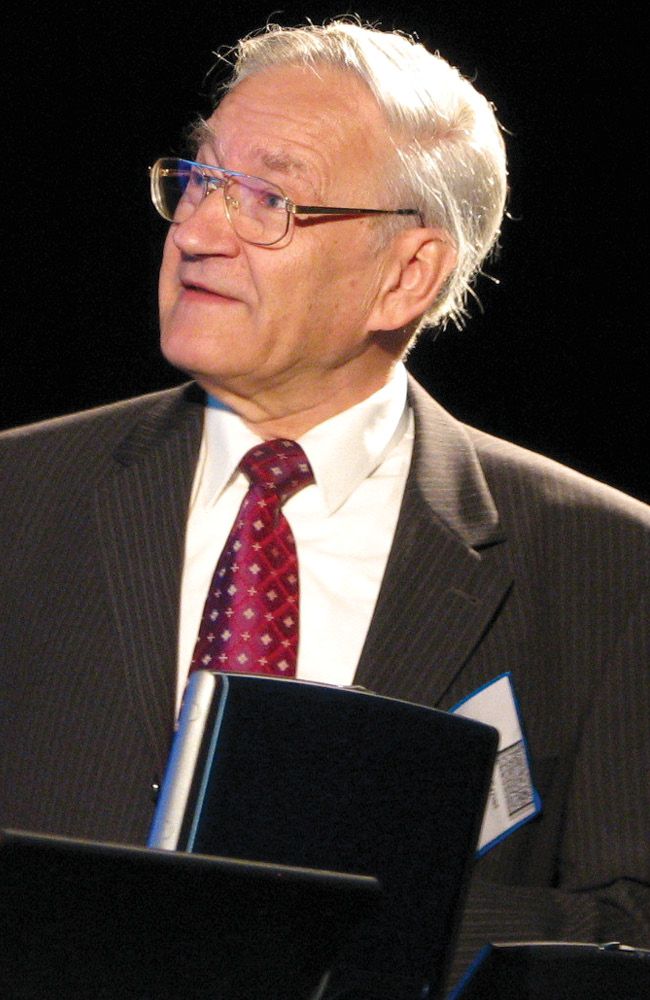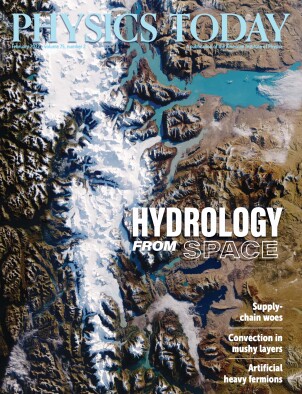Richard R. Ernst
DOI: 10.1063/PT.3.4946
Nobel laureate Richard R. Ernst, the pioneer of modern nuclear magnetic resonance (NMR), died on 4 June 2021 in his birth town of Winterthur, Switzerland. He was the key player in transforming NMR from its roots in physics to an indispensable tool in chemistry and medicine. His many fundamental innovations not only propelled NMR into becoming the most versatile analytical method in structural chemistry and molecular biophysics but also were essential to the development of Fourier-transform (FT) magnetic resonance imaging (MRI), an exceptionally powerful tool in diagnostic medicine.

Richard R. Ernst
ROLF TSCHUDIN

Ernst was born on 14 August 1933, the son of an architecture teacher. His parents fostered a love for music in him and his two sisters, with Ernst composing and playing the cello. His interest in chemistry was kindled by the discovery in his home’s attic of a large box of chemicals left by his late uncle, a metallurgical engineer. Ernst went on to study chemistry at ETH Zürich but soon was disappointed by the enormous amount of memorization the curriculum required. After a two-year interruption for his obligatory Swiss Army training, he returned to ETH. In 1962 he completed his PhD in physical chemistry under the direct supervision of Hans Primas in Hans Günthard’s laboratory, where he worked mostly on the development of NMR instrumentation. He also received rigorous training in quantum mechanics from Primas, who had been strongly influenced by lectures of Wolfgang Pauli at ETH.
Immediately following their marriage, Ernst and his wife, Magdalena Ernst-Kielholz, left for Palo Alto, California. There Ernst spent a postdoctoral period with Weston Anderson at Varian Associates, a world-leading company that introduced commercial NMR equipment in close collaboration with Nobel laureate Felix Bloch at Stanford University. Anderson and Ernst demonstrated the enormous gains in sensitivity and efficiency attainable by pulsed FT NMR, which became the cornerstone for all of Ernst’s future technological breakthroughs.
In 1968 Ernst returned to ETH Zürich as a lecturer and was promoted to full professor in 1976. In his autobiography, which was published in German in 2020 and in English in 2022, he expresses the frustrations he felt after returning to Switzerland about the slow pace and muted interest in adopting FT NMR until Spectrospin (now part of Bruker), located near Zürich, produced the first commercial FT NMR spectrometer. Around the same time, a lecture by the Belgian physicist Jean Jeener about two-dimensional FT NMR inspired Ernst to break new ground and dramatically expand the scope of the technology by developing the foundation for a vast array of multi-pulse, multinuclear NMR experiments.
A gifted experimentalist, Ernst used his deep understanding of spin physics to become the first to fully exploit the rich molecular information contained in large networks of coupled nuclear spins. The full Liouville–von Neumann description of how such networks evolve in time is daunting to many practicing chemists—and even physicists. That prompted Ernst and his coworkers to introduce an elegant analytical treatment, known as product operator formalism, that remains key to virtually all modern solution NMR innovations. While developing multidimensional NMR spectroscopy, he proposed that the concept offered similar advantages in the then-fledgling field of magnetic resonance imaging. His classic 1976 paper, with Walter Aue and Enrico Bartholdi, in the Journal of Chemical Physics beautifully lays out the principles of both multidimensional NMR spectroscopy and today’s FT MRI.
In a subsequent, highly successful endeavor, Ernst collaborated with Kurt Wüthrich to expand the use of 2D NMR to study the structure of proteins in solution. That work created the basis for Wüthrich’s 2002 Nobel Prize in Chemistry.
In addition to the Nobel Prize, Ernst received many honors and awards. They include the Marcel Benoist Swiss Science Prize in 1986, the Ampere Prize in 1990, the Wolf Prize in Chemistry in 1991, and the Louisa Gross Horwitz Prize in 1991.
Despite all his scientific successes, Ernst remained a modest and humble person. Although invariably direct and sometimes outspoken, both in public and in private, he was a compassionate man and had an uncanny ability to touch people’s lives. At memorial sessions that honored his life and work, those who had the privilege to know him personally shared such unforgettable special moments.
In 1968, before returning to Switzerland from the US, Ernst and Magdalena visited Nepal, where they became enthralled by Himalayan art, religion, and culture. It was a passion Ernst retained for the rest of his life. Over time, he and Magdalena acquired an extensive collection of precious Tibetan thangkas (scroll paintings), which were displayed at their home in Winterthur. After he retired, Ernst used Raman spectroscopy to analyze with unabated scientific rigor those centuries-old thangkas for paint pigments to delineate their provenance. Through his appreciation for Buddhism, he became closely acquainted with the 14th Dalai Lama, Tenzin Gyatso.
With countless lectures to the general public and his writings, Ernst turned into a global ambassador of science who shared his passion for research, promoted its broad significance, and appealed to his colleagues to take on responsibilities for the benefit of humankind. With his death, the NMR field lost not only a founding father but also an exceptional human being. As a role model for many of us, Richard Ernst embodied the scientific conscience of our community.
More about the Authors
Ad Bax. National Institutes of Health, Bethesda, Maryland.
Rafael Brüschweiler. Ohio State University, Columbus.
